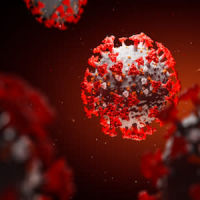COVID-19 pneumonia is an evolving disease. In this review, the authors focus on the development of its pathophysiologic characteristics over time and how these changes determine modifications in treatment.
The clinical features of COVId-19 are highly variable, ranging from asymptomatic patients to patients with a severe form of respiratory failure. These clinical features also tend to change with time. Although coronavirus infections are new, an understanding of the pathophysiology has been fairly quick and has led to a significant improvement in treatment and patient outcomes. However, morality among the most severely ill patients with COVID-19 remains quite high.
Based on the analysis and interpretation of the disease trajectory, the authors identify five phases based on the intensity of treatment and the location where the treatment takes place. These include out-of-hospital, emergency department, high-dependency unit, intensive care unit and post-discharge environment. The focus is on the time-related pathophysiological characteristics and the respiratory treatment that occurs between the patient’s admission to the hospital and their discharge from the ICU.
COVID-10 patients present to the emergency department with a range of clinical symptoms. The most common symptoms are dry cough, fever and conjunctivitis, followed by GI symptoms such as nausea and diarrhoea. A frequent complaint peculiar to COVID-19 is anosmia and ageusia, reflecting viral entry into the neurological system via the olfactory nerve.
In these patients, the PaO2/FiO2 ratio varies widely. While there are abnormalities of gas exchange, the respiratory rate is often normal or only moderately increased. Also, in COVID-19 pneumonia, there is a disassociation between the severity of the hypoxaemia and the low prevalence of dyspnoea.
During the first few days of the infection, the incidence of CT findings in symptomatic COVID-19 patients can be between 10 to 30% of cases. In the ED, the typical appearance of COVID-19 pneumonia is a radiograph showing bilateral patchy infiltrates, while the CT shows ground-glass infiltrates in the posterior and peripheral regions of the lungs. COVID-19 patients experience increased respiratory drive and tidal volumes for several days before presenting at the hospital.
In the dependency unit, the disease generally starts to worsen, either through a natural evolution or additional patient self-inflicted lung injury (P-SILI). Patients may also develop oedema and atelectasis. In these patients, non-invasive support is indicated if they result in a reversal of hypoxaemia and a decreased inspiratory effort. Mechanical ventilation may be considered to avert P-SILI.
In the ICU, the primary characteristic of COVID-19 pneumonia is a shift from oedema or atelectasis to less reversible structural lung alterations to lung fibrosis. These are associated with impairment of respiratory mechanics, increased arterial carbon dioxide tension, decreased recruitability and lack of response to PEEP and prone positioning. In the ICU, the principles of treatment should not differ from the ones recommended for ARDS. But attention should be paid to the setting of PEEP. Careful monitoring of the haemodynamic and respiratory system mechanics should guide appropriate ventilator treatment.
Overall, COVID-19 is not a heterogeneous disease. Heterogeneity is generated only by the inclusion of patients with the same disease but at different stages of evolution. The need of the day is to better understand the underlying mechanisms instead of inventing miracle solutions. More attention should be given to respiratory monitoring to guide optimal and timely treatment.
Source: European Respiratory Review
Image Credit: iStock



























